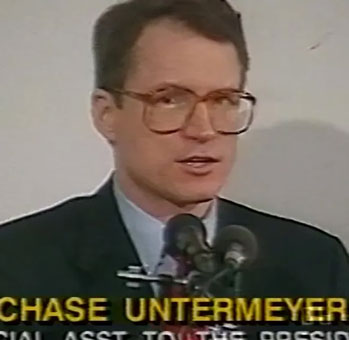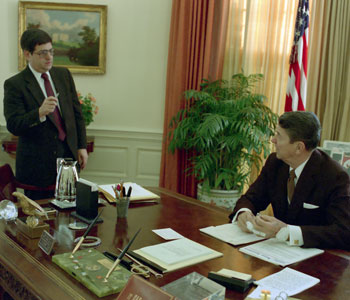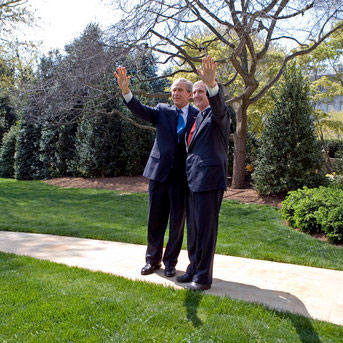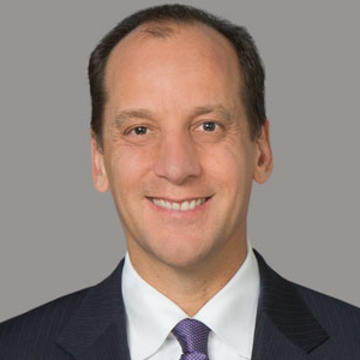A rare 'friendly' takeover
The amicable transition between Ronald Reagan and George H. W. Bush was almost too smooth
When George H. W. Bush was elected president in 1988, he had already served two terms as vice president under Ronald Reagan. David Marchick, chief operating officer of the United States International Development Finance Corporation (DFC) during the first year of the Biden administration, and Andrew (Andy) Card, the United States secretary of transportation from 1992–93 under George H. W. Bush and White House chief of staff for George W. Bush from 2001–06, discuss the exceptionally friendly transition from Ronald Reagan to George H. W. Bush.

David Marchick: [George H. W.] Bush was vice president. He was a candidate for president. How much time did he actually spend on transition, and how often did the transition team brief him or meet with him?
Andy Card: In the early days of the campaign, he did not spend much time with it. He left Chase [Untermeyer] to his work, and Chase wrote memos, and those memos would be reviewed. They really anticipated a problem that not many people thought about. This would be a friendly transition. It wasn’t a hostile takeover. Most of American history has had transitions that were centered around hostile takeovers. This was a friendly takeover, so we had the added burden of managing the expectations of people who are working for President [Ronald] Reagan who just assumed they would stay in their jobs if George Bush was elected.
Most of American history has had transitions that were centered around hostile takeovers
Chase anticipated that and actually started working on that with some of his memos early on, so we paid a little bit more attention. But candidly, the campaign was so focused on the campaign, they were not spending a lot of time thinking about the transition. It was kind of left to Chase the day after the election.
Andy Card: Ken Duberstein helped later on in the transition by sending letters to all of the appointees, saying, "A new president is coming in, we want to make sure the new president has the right to put people in positions that he wants to put in. So think about sending in your letter of resignation." That letter I don’t think generated any response.
David Marchick: I guess he had to send that twice because people ignored that piece of mail.

Andy Card: Yes. This was the challenge of having a friendly takeover where people working for President Reagan presumed that they would of course just stay on the job and continue to do what they were doing. But Ken Duberstein understood the real responsibility of a president, and that’s to put people around them that they want to put in there, to build a team. Ken tried to help, and eventually it did make a difference, but it did take some time to catch on, and it was much later in the process than what Josh Bolten did helping with the transition from George W. Bush to Barack Obama.
This was the challenge of having a friendly takeover where people working for President Reagan presumed that they would of course just stay on the job and continue to do what they were doing
David Marchick: How did the Bush 41 team decide which Reagan appointees could stay in and which should go?
Andy Card: That was kind of Chase’s job: first to understand the lay of the land and then, when the transition was formalized, it was collecting names, assessing abilities, and trying to make people fit. But I do want to call attention to a reality that has been missed in a lot of the books I’ve read about transitions. We tend to think of the transition as one transition. It’s really two transitions that a president makes: one is the White House staff itself, and the other is the transition of the executive branch of government. I feel strongly that Presidents George H. W. Bush and George W. Bush both recognized that transition at the White House has to be done, I think, under the tutelage of a chief of staff because the chief of staff is responsible for running that staff.
We tend to think of the transition as one transition. It’s really two transitions that a president makes
Transitioning the cabinet agencies is very different. In the transition even from Ronald Reagan to George H. W. Bush there was a separate transition from the White House staff vis-à-vis the rest of the executive branch, and where the responsibility overlaps is in the Office of Presidential Personnel. Chase was brought in to run the Office of Presidential Personnel right after the transition had been completed. His job was building the departments and agencies, Schedule Cs [junior political appointees], the cabinet secretaries, the deputy secretaries, assistant secretaries, and the commissions and the ambassadorships.

The White House staff transition is really run more by the chief of staff. And just to put things in context, I had the privilege of working under every chief of staff that served Ronald Reagan and eventually George H. W. Bush before I became chief of staff. But every time there was a change in chief of staff, especially under the Reagan administration, I would tender my resignation. I started off as a special assistant to the president for intergovernmental affairs, a very heady title and a great responsibility. And when chiefs of staff would change, I would tender my resignation, expecting that the new chief of staff should decide who the staff should be. I don’t know why, but fortunately I was told each time that they wanted me to stay.
But every time there was a change in chief of staff, especially under the Reagan administration, I would tender my resignation
I do feel that the chief of staff should have a disproportionate say in who the White House staffers are since the chief of staff is held accountable for how the staff is doing its job. I would say that history would show that the two Bush administrations and the Obama administration did a good job of that, focusing on the White House staff first and letting the chief of staff pick the staff.

